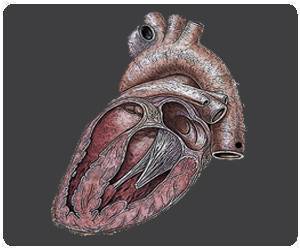The first official testing of a multilayer stent in patients suffering from aortic aneurysm, a condition causing the formation of a bugle in the aorta, could be done in the Temple University Hospital

Multilayer stents incorporate key advantages over traditional aortic stents -- among the most important of which is the elimination of the need for surgical bypass grafts. Unlike traditional fabric-covered stents, multilayer stents have no fabric covering and are composed of an intricately-layered metal-mesh framework that -- by virtue of its unique, three-dimensional geometric design -- affects the flow of the blood such that even when the placement of the stent covers the openings to branching vessels to the brain or abdomen, the blood can flow unhindered into those arterial branches. As a result, the need to perform open-heart procedures to create bypasses has been eliminated.
"The fluid dynamics of the uniquely-constructed multilayer stent allows it to stay open to the branches, but also clot off the aneurysm, and represents a novel method to treat aortic aneurysms," said Dr. Wheatley.
"The multilayer stent changes the dynamic properties of blood as blood flows through the metal frame of the stent," continued Dr. Wheatley. Those changes include less turbulent and more directed blood flow through the aneurysm and branching vessels when the stent is in place. The altered dynamic properties in turn reduce the amount of pressure exerted by the blood on the aneurysm, which allows the aneurysm to clot and heal itself.
The idea to test a stent designed without a fabric covering originated with engineers in Belgium who specialize in the study of blood flow. Dr. Wheatley and his primary collaborator, surgeon and founder of the Arizona Heart Institute Edward Diethrich, MD, tested the device in pre-clinical trials in the early 2000s. The Belgium-based medical technology company Cardiatis then developed the multilayer stent for clinical use.
Dr. Diethrich, working at the Arizona Heart Foundation, is now encouraging the multilayer stent's approval by the U.S. Food and Drug Administration. Supporting that effort is Dr. Wheatley's continued research into multilayer stent technology. In recent collaborations with physicians in France where the stent is approved for use, as well as a review of published global outcomes, Dr. Wheatley found that patients who had received multilayer stents experienced outcomes that were similar to or better than those of patients who had received traditional stents.
Advertisement
Even with the approval of multilayer stents, however, under-screening remains a major obstacle to reducing annual deaths from aortic aneurysm in the United States. The Screening Abdominal Aortic Aneurysms Very Efficiently (SAAAVE) Act, which was passed in 2006, made ultrasound screening for abdominal aortic aneurysms a part of the routine initial physical exam given when persons age 65 join Medicare. The act represented a significant improvement, but more programs like SAAAVE are needed, according to Dr. Wheatley.
Advertisement
Source-Eurekalert









